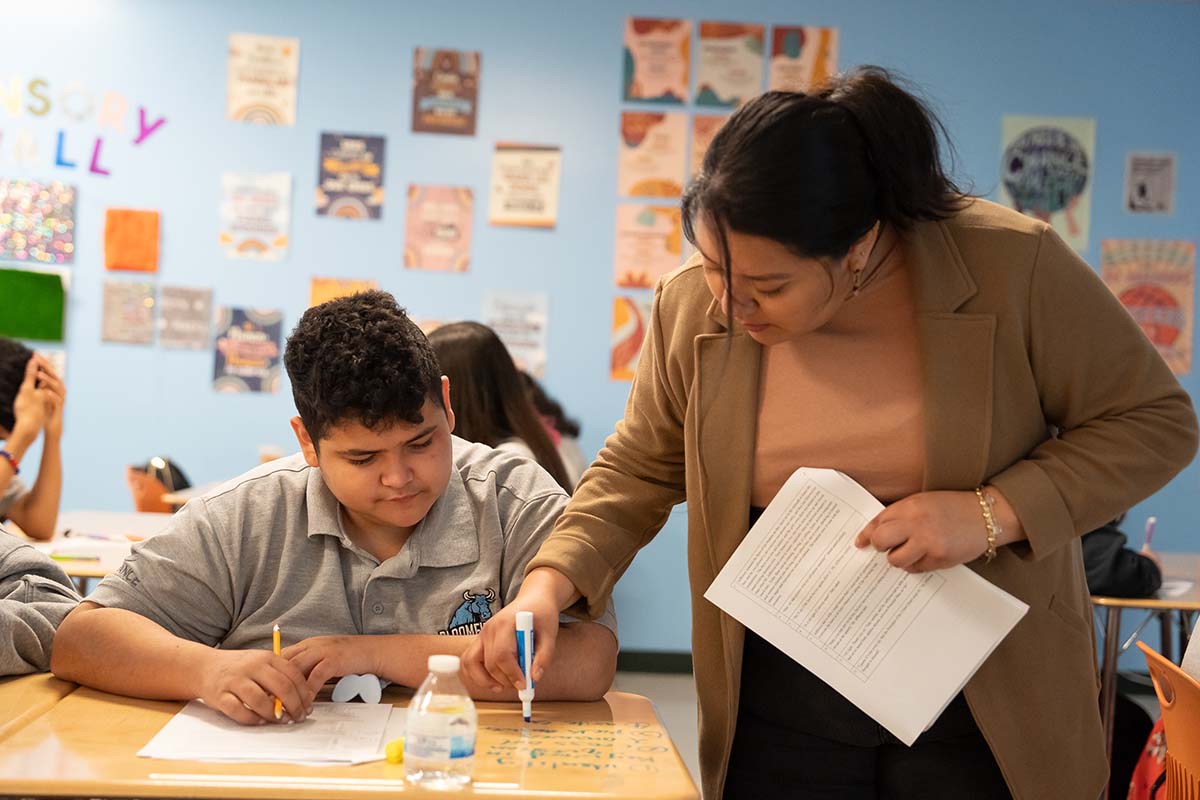Across the country, schools are grappling with a critical and worsening teacher shortage. From urban centers to rural districts, the lack of qualified educators threatens student outcomes, teacher well-being, and the future of public education. In California, this shortage has been growing steadily since 2015 and shows no signs of slowing down, especially in high-need subjects such as special education, math, science, and English.
As the state’s public school system continues to serve an increasingly diverse student body, the demand for highly qualified, culturally responsive educators is more urgent than ever. Yet at the federal level, proposed cuts to education funding—such as the recent decision to eliminate allocations for California’s educator development—send the wrong message: that the cost of entering the teaching profession should continue to fall on the shoulders of those answering the call to serve.
Becoming a Teacher Shouldn’t Be a Financial Burden
Let’s be clear: the cost of becoming a teacher isn’t just about tuition. For many aspiring educators, the barriers include student loan debt, the high cost of living, certification fees, and low starting salaries. These hurdles can be especially daunting for first-generation college graduates, career changers, and individuals from historically underrepresented communities—ironically, the very people our students need most.
Without meaningful support, we risk losing an entire generation of talented, passionate individuals who want to teach but simply cannot afford to.
Investing in Solutions That Work
Some organizations are working hard to change that. Teacher residency programs, for instance, have emerged as a powerful solution. By offering hands-on classroom experience, mentorship, and financial assistance, these programs provide a sustainable pathway into teaching, especially in high-need schools.
One example of an effective long-term solution can be found at Alliance College-Ready Public Schools Foundation in Los Angeles, where the Alliance Teacher Residency Program helps remove some of the biggest obstacles to certification. The program prioritizes Alliance alumni and current staff members who are passionate about becoming educators, offering them the financial and professional support needed to succeed and to stay. Many resident teachers from the program remain in the classroom for years, often returning to teach in the very schools they once attended, becoming powerful role models for their students. Programs like this aren’t just stopgap measures—they’re strategic investments in a stronger, more sustainable future for public education.
We Need More Funding—Not Less
Cutting funding to educator development does not solve the teacher shortage. It deepens it. If we want strong, stable schools, we must invest in the people who make them work. That means creating financially viable, supported pathways into teaching, especially for educators who reflect the communities they serve.
Across California, schools are seeing the impact of supporting teachers from the very beginning of their careers. At organizations like Alliance College-Ready Public Schools Foundation, early investment in educators has led to stronger retention, improved student outcomes, and a more stable future for the communities they serve. The return on that investment is clear, and it reminds us that the cost of becoming a teacher, while difficult to quantify, is already too high. It should never be a barrier to entering the profession or part of the problem we’re trying to solve. If we truly value education, then we must invest in those who make it possible.

